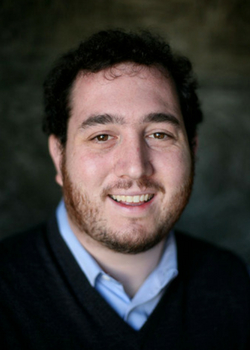There are two, fundamental stories that one can tell about the nature of time:
In the first, most common in the ancient world, time is envisioned as a vast, unbroken circle. The moon grows and shrinks with each passing month, and then does it again. The seasons progress on in an endless loop. Babies are born, old people pass away, and the babies themselves someday have babies and then grew old. What was once will inevitably be again. There is nothing new under the sun.
The second story is the one primarily told by moderns: Time is a line, a sequence of events that make up a journey from one stage to the next. Woven into the concept of linear time is the notion of progress. If time is a circle then there is no possibility of progress, because every step that one takes along a circumference leads you closer to where you started. However, if time is a line – then history is the unfolding journey toward the present, and the present is perpetually giving way to the future. Put another way: The iPhone 11 follows the iPhone 10, and never the other way around. Optimists may side with Paul McCartney, who sang that “it’s getting better all the time.” Cynics may believe the opposite; that each generation (and each iPhone) grows steadily worse. But, both agree that time flows onward toward a world that is markedly different than the one that preceded it.
Simchat Torah, the celebration of the completion of the annual Torah reading cycle and its immediate restarting, captures elements from both stories. On one hand, Simchat Torah is all about circles. As soon as we complete the final reading from Deuteronomy, we roll the cylindrical scrolls back to the Beginning and start all over again. In celebration of this ritual, we dance seven hakafot, seven sacred circlings, in which we symbolize with our bodies the eternal process of reading and re-reading that has defined Jewish life for millennia. As the Talmud instructs, hafoch ba v’hafoch ba kula ba– we spend our Jewish lives turning the Torah over and over again, since everything is in it.
However, the Torah that we celebrate on this day radically rejects the notion that time is a never-ending loop. It begins with the story of Creation – the affirmation that time has a definite beginning, endowed from the outset with a sense of purpose. Abraham sets out on a quest, leaving his past behind to forge a new faith. And, God’s greatest gift to the Jewish People is our liberation from slavery, leading to our exodus across a wilderness toward a new possibility. The narrative of the Torah disrupts the idea that what was once will always be, and instead tells our story as one of an ongoing journey from here to there, from darkness to light.
Simchat Torah invites us not to choose one story of time or the other, but to recognize the truth in both. There is great comfort and meaning in returning to the same stories year after year. Yet, if we are listening to their message, we know that it is not sufficient to simply stay the same, like our ancestors we need to break out of old patterns in search for new truths; that we and our world ought to always be on a journey toward greater freedom. The readings stay the same, but we are meant to change, to strive, to grow. On Simchat Torah we affirm the truth of the circle and of the line, and rejoice in the coming together of both.


 Download PDF
Download PDF